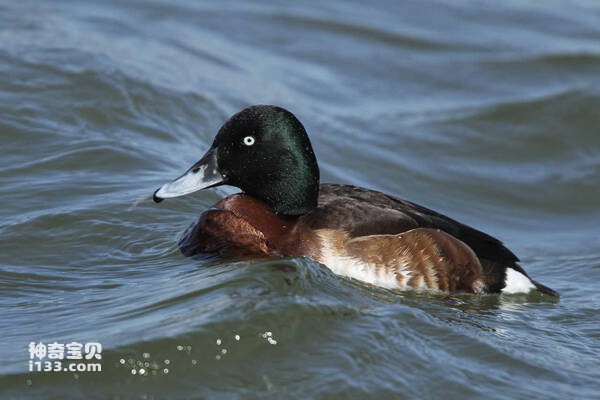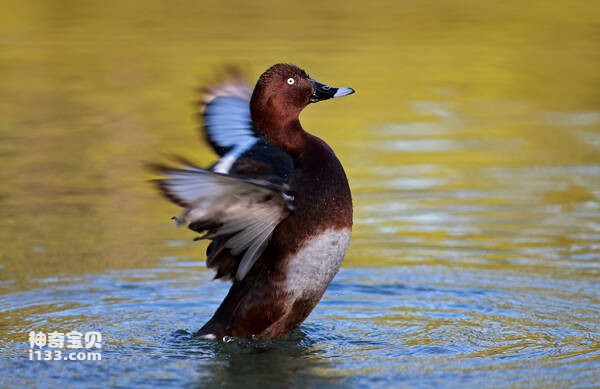Aythya australis
IUCN
LCBasic Information
Scientific classification
- name:Aythya australis
- Scientific Name:Aythya australis,Australian White-eyed Duck,Hardhead,White-eyed Duck
- Outline:Waterfowl
- Family:
Vital signs
- length:42-60cm
- Weight:840-900g
- lifetime:No textual research information is available
Feature
Round body, large head, rarely singing, deep water birds, good at folding wings diving
Distribution and Habitat
It is distributed in the Pacific Islands, including Taiwan Province of China, Dongsha Islands, Xisha Islands, Zhongsha Islands, Nansha Islands, and the Philippines, Brunei, Malaysia, Singapore, Indonesia's Sumatra, Java Island, and Papua New Guinea. Australia and New Zealand, including Tasmania and its nearby islands.
During the breeding period, it mainly inhabits freshwater lakes, ponds, and swamps in open areas rich in aquatic plants, and in winter it mainly inhabits large lakes, slow-flowing rivers, estuaries, bays, and estuarine deltas.
Appearance
The Australian diver is 42-60cm long and weighs 840-900g. It is a medium-sized duck with an overall chocolate brown color when swimming and a white underbody visible in flight. The interior of the main wing is white with brown edges. Visible white markings on the chest can be seen when flying or swimming in shallow water. Blue beak with white tip. The male duck has white eyes and the female duck has brown eyes.
Details
The Australian submerged Duck (Aythya australis) is a species of bird in the genus Aythya of the order Anseriformes, the Australian White-eyed Duck, Hardhead, and White-eyed Duck.

The Australian duck is a migratory bird. Migrating in groups, often into more than ten to dozens of small groups, rarely hundreds of large groups.
The Australian diver is an omnivorous animal that eats living plants, especially mussels and freshwater shellfish. Often foraging in shallow water where vegetation flourishes. Foraging activities are mainly in the early morning and dusk, during the day more rest on the shore or floating on the open water to sleep. Foraging methods mainly rely on diving to feed, generally in the water is not too deep, and sometimes in the shallow water at the water's edge to extend the head into the water, or tail up into the water to feed.

It is found in thick vegetated areas, near water areas, along rivers and channels, around stagnant pools, and DAMS. The nest was made of reeds and stalks of grass among the vegetation. She builds a nest and incubates her eggs alone.
Listed in the International Union for Conservation of Nature Red List of Threatened Species (IUCN) for 2016 ver 3.1 - Not Threatened (LC).
Protect wild animals and eliminate wild meat.
Maintaining ecological balance is everyone's responsibility!








